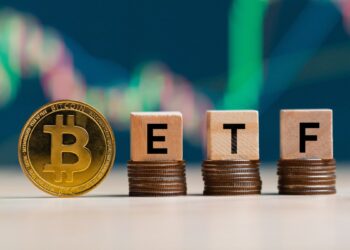In November last year, Reserve Bank governor Dr Philip Lowe announced that the lower bound for the Australian cash rate was 0.25 of a percentage point before a version of quantitative easing (QE) would be used.
Graham Cooke, insights manager at Finder, said QE will be on the cards if the rate cuts continue to be ineffective beyond the housing market.
“The RBA said they may look to alternative stimulus methods once the rate hits 0.25 [of a percentage point],” Mr Cooke said.
“We’re only two cuts away from that, and the three cuts of 2019 have failed to stimulate anything beyond the housing market.”
According to Chris Bedingfield, principal at Quay Global Investors, introducing quantitative easing (QE) — which the central bank has alluded to following two rate reductions — is “doomed to fail”.
Leaning on lessons learnt from other countries, Mr Bedingfield said: “We know Japan has used QE since 2001 for little or no inflationary or stimulatory effect. Further, there appears to be little evidence it worked in the US, Europe or the UK.”
The idea that low interest rates and QE support asset prices sounds intuitively correct (i.e. “money printing”) but is not widely supported by observation or the operational realities of monetary policy.
“While many market commentators are predicting further interest rate cuts in 2020, we have serious doubts about the efficacy of this strategy,” Mr Bedingfield said.
“We only need to look at Japan, which moved to a zero interest rate policy in 1995, to see that it just doesn’t work — over the past 30 years, the Nikkei 225 Index has fallen 41 per cent.”
Mr Bedingfield said QE has largely failed to deliver because, functionally, it operates as a private sector tax aimed at the banking system, the wealthy and anyone that holds a superannuation account.
“QE encourages the sale of low-risk, low-yielding assets for even lower-yielding cash, resulting in lower net interest income to the private sector. Where does this income go? To the central bank on the other side of the trade, acquiring higher-yielding bonds for the lower-cost cash,” Mr Bedingfield said.
“In effect, the central bank is making an investment spread at the expense of the natural holders of bonds (including banks and superannuation accounts).
“In Australia, excess capital (profits) are remitted to the Treasury — in the same way that cash receipts from the Tax Office are remitted to the Treasury.
“Investors seeking Aussie QE should be careful what they wish for; essentially, they are asking for the wider economy to be taxed.”
Mr Bedingfield noted five myths about quantitative easing:
Myth 1 – QE is “money printing”, characterised as injecting cash into the economy.
The truth is that QE is nothing more than an asset swap between the central bank and the private sector. The swap is one form of monetary instrument (bonds) for another (cash).
Myth 2 – QE will inject new spending power into the economy.
Owners of bonds are natural savers — there is scant evidence to show swapping bonds for cash increases spending outcomes in the real economy.
Myth 3 – QE will force down long-term interest rates.
US history — and 10-year bond yields — actually shows that when QE commenced, long-term interest rates rose. And when QE ended, long-term interest rates fell.
Myth 4 – QE provides cash for banks to lend.
Banks do not need deposits or reserves to lend. They simply need enough regulatory capital (from shareholders) and a sufficient supply of creditworthy borrowers to create a loan: and the loan creates the deposit. Therefore, the mechanics of QE, which adds deposits and reserves in exchange for bonds, do not impact banks’ ability or willingness to extend loans.
Myth 5 – QE drives long-term sharemarket performance.
The easy response to this myth is Japan. There, QE has been implemented for 20 years, and the equity market remains around 40 per cent below its 1989 peak. Supporters of QE (i.e. Bank of Japan) argue QE has not worked “yet” — but how much more time is needed?


